Do you have a question about the Panasonic DMR-BWT740 and is the answer not in the manual?
Updates unit firmware for new features and proper operation.
Critical warnings regarding fire, electric shock, and product damage.
Precautions for safe operation and handling of batteries.
List of items included with the product for setup and use.
Enables seamless operation between the unit and other Panasonic VIERA devices.
Adjusts settings like subtitles and audio during playback of video or music.
Configures tuning, sound, display, connection, and network settings.
Miscellaneous operations including media management and text entry.
Updates unit firmware for new features and proper operation.
A guide to identifying and resolving common operational issues with the unit.
Detailed technical specifications of the unit's hardware and capabilities.
Outlines which media types support specific file formats for recording and playback.
Specific care instructions for the unit's Hard Disk Drive and USB HDDs.
Precautions to take when placing and setting up the unit to prevent damage.
How to clean the unit and its lens.
Detailed description of the remote control and its buttons.
Explanation of the unit's display indicators and their meanings.
Diagram and instructions for making basic connections to a TV.
Important safety and usage guidelines for wireless LAN connections.
How to operate the TV using the unit's remote control buttons.
Setting or entering a PIN for security and parental controls.
Methods for connecting to a wireless network, including search and WPS.
Overview of the categories and items available in the FUNCTION MENU.
Selecting channels from a list and managing the channel list.
Displaying information related to live TV playback status.
Setting the duration for recording, including continuous recording.
Using the TV Guide to select programmes for timer recording.
Important notes and limitations regarding timer recordings.
Interface for navigating and selecting recorded titles.
The screen that appears when media is inserted, allowing access to operations.
Continuing playback from where it was last stopped.
Previewing content quickly during playback.
Playing back video in slow motion.
Advancing playback frame by frame.
Steps to prepare the unit and TV for 3D playback.
Adjusting 3D playback settings while viewing content.
Steps to delete recorded titles, including single and multiple deletion.
Steps to edit recorded titles, including changing titles and other functions.
Copying titles from discs or USB drives using the DIRECT NAVIGATOR.
Creating and using a list to manage multiple copying tasks.
Guidelines and limitations for performing high-speed copying.
Interface for accessing photo-related functions.
Managing photo folders, such as creating, combining, and deleting.
Choosing specific photos or folders for copying.
Transferring MP3 music files from external media to the unit's HDD.
Browsing and playing music by artist.
Registering music tracks into preset playlists.
Making the unit act as a server to share media content on the network.
Using the unit to access media content from other DLNA servers on the network.
Configuring the Wi-Fi Direct connection method.
Steps required before using network services, including network connection.
Setting timer recordings for external equipment.
Specific instructions for copying AVCHD video to DVD-R discs in high definition.
Steps for physically connecting a USB HDD to the unit.
Safe procedure for disconnecting a USB HDD to prevent data loss.
Automatic TV channel switching and power control via VIERA Link.
Using the TV remote to pause live TV broadcasts.
Immediately recording a programme being viewed on the TV.
Operating the unit using the TV's remote control.
Core playback adjustments including audio, subtitles, and playback modes.
Settings related to channel tuning, favorites, and auto setup.
Settings related to playback, recording, and management of HDD, discs, and USB HDDs.
Configuration settings for network connectivity and services.
Miscellaneous settings including standby, remote control, and system updates.
Configuration settings for network connectivity and services.
Adjusting the aspect ratio to match the connected TV.
Configuration settings for network connectivity and services.
Managing media discs, including naming and setting protection.
Setting or releasing protection for discs to prevent accidental recording or editing.
Troubleshooting steps for when the unit does not operate correctly.
Steps to take if the unit is unable to eject a disc.
Resolving problems related to recording, timer recordings, and copying content.
Resolving playback issues when accessing content from DLNA clients.
Restoring the unit to factory default settings.
General specifications including dimensions, mass, power consumption, and operating conditions.
Information on the recording formats and modes supported by the unit.
Specifications for the wireless LAN connectivity, including standard, frequency, and security.
Information about the Rovi Guide system and its associated patents.
Updates unit firmware for new features and proper operation.
Critical warnings regarding fire, electric shock, and product damage.
Precautions for safe operation and handling of batteries.
List of items included with the product for setup and use.
Enables seamless operation between the unit and other Panasonic VIERA devices.
Adjusts settings like subtitles and audio during playback of video or music.
Configures tuning, sound, display, connection, and network settings.
Miscellaneous operations including media management and text entry.
Updates unit firmware for new features and proper operation.
A guide to identifying and resolving common operational issues with the unit.
Detailed technical specifications of the unit's hardware and capabilities.
Outlines which media types support specific file formats for recording and playback.
Specific care instructions for the unit's Hard Disk Drive and USB HDDs.
Precautions to take when placing and setting up the unit to prevent damage.
How to clean the unit and its lens.
Detailed description of the remote control and its buttons.
Explanation of the unit's display indicators and their meanings.
Diagram and instructions for making basic connections to a TV.
Important safety and usage guidelines for wireless LAN connections.
How to operate the TV using the unit's remote control buttons.
Setting or entering a PIN for security and parental controls.
Methods for connecting to a wireless network, including search and WPS.
Overview of the categories and items available in the FUNCTION MENU.
Selecting channels from a list and managing the channel list.
Displaying information related to live TV playback status.
Setting the duration for recording, including continuous recording.
Using the TV Guide to select programmes for timer recording.
Important notes and limitations regarding timer recordings.
Interface for navigating and selecting recorded titles.
The screen that appears when media is inserted, allowing access to operations.
Continuing playback from where it was last stopped.
Previewing content quickly during playback.
Playing back video in slow motion.
Advancing playback frame by frame.
Steps to prepare the unit and TV for 3D playback.
Adjusting 3D playback settings while viewing content.
Steps to delete recorded titles, including single and multiple deletion.
Steps to edit recorded titles, including changing titles and other functions.
Copying titles from discs or USB drives using the DIRECT NAVIGATOR.
Creating and using a list to manage multiple copying tasks.
Guidelines and limitations for performing high-speed copying.
Interface for accessing photo-related functions.
Managing photo folders, such as creating, combining, and deleting.
Choosing specific photos or folders for copying.
Transferring MP3 music files from external media to the unit's HDD.
Browsing and playing music by artist.
Registering music tracks into preset playlists.
Making the unit act as a server to share media content on the network.
Using the unit to access media content from other DLNA servers on the network.
Configuring the Wi-Fi Direct connection method.
Steps required before using network services, including network connection.
Setting timer recordings for external equipment.
Specific instructions for copying AVCHD video to DVD-R discs in high definition.
Steps for physically connecting a USB HDD to the unit.
Safe procedure for disconnecting a USB HDD to prevent data loss.
Automatic TV channel switching and power control via VIERA Link.
Using the TV remote to pause live TV broadcasts.
Immediately recording a programme being viewed on the TV.
Operating the unit using the TV's remote control.
Core playback adjustments including audio, subtitles, and playback modes.
Settings related to channel tuning, favorites, and auto setup.
Settings related to playback, recording, and management of HDD, discs, and USB HDDs.
Configuration settings for network connectivity and services.
Miscellaneous settings including standby, remote control, and system updates.
Configuration settings for network connectivity and services.
Adjusting the aspect ratio to match the connected TV.
Configuration settings for network connectivity and services.
Managing media discs, including naming and setting protection.
Setting or releasing protection for discs to prevent accidental recording or editing.
Troubleshooting steps for when the unit does not operate correctly.
Steps to take if the unit is unable to eject a disc.
Resolving problems related to recording, timer recordings, and copying content.
Resolving playback issues when accessing content from DLNA clients.
Restoring the unit to factory default settings.
General specifications including dimensions, mass, power consumption, and operating conditions.
Information on the recording formats and modes supported by the unit.
Specifications for the wireless LAN connectivity, including standard, frequency, and security.
Information about the Rovi Guide system and its associated patents.
| Depth | 238 mm |
|---|---|
| Width | 430 mm |
| Height | 59 mm |
| Weight | 3300 g |
| Device type | Blu-Ray player |
| Built-in HDD | Yes |
| HDD capacity | 1000 GB |
| Product color | Black |
| Audio decoders | DTS-HD HR, DTS-HD Master Audio, Dolby Digital Plus, Dolby TrueHD |
| AC input voltage | 220-240 V |
| AC input frequency | 50 Hz |
| Disc types supported | BD-R, BD-R DL, BD-RE, BD-RE DL, CD, CD-R, CD-RW, DVD-R, DVD-R DL, DVD-RW |
| Recording disc types | DVD+RW |
| Playback disc formats | DVD-Video |
| Supported video modes | 1080p |
| USB 2.0 ports quantity | - |
| Audio formats supported | AAC, FLAC, MP3, WAV, WMA |
| Compatible memory cards | SD, SDHC, SDXC |
| Image formats supported | JPG, MPO |
| Video formats supported | MKV, XVID |
| Analog signal format system | NTSC, PAL |
| Power consumption (typical) | 32 W |
| Consumer Electronics Control (CEC) | VIERA Link |
| Audio output channels | - channels |
| TV tuner type | DVB-T, DVB-T2 |
| Ethernet LAN (RJ-45) ports | 1 |
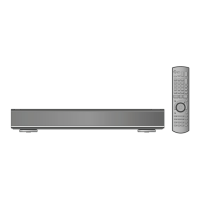
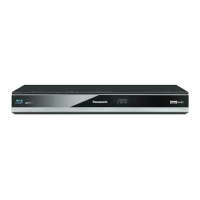
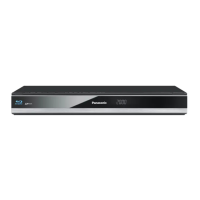
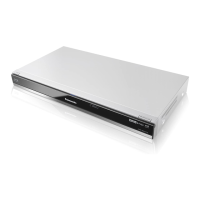
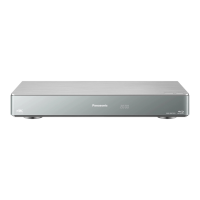
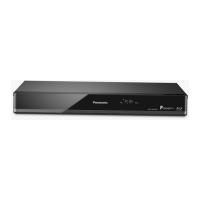
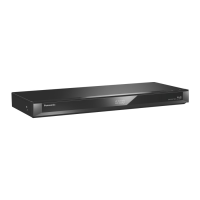
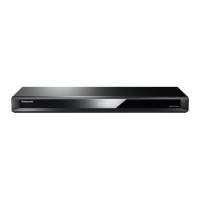
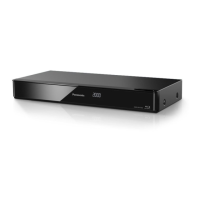
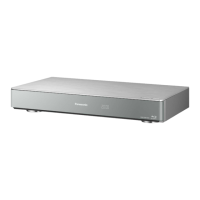
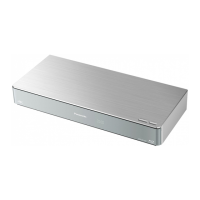
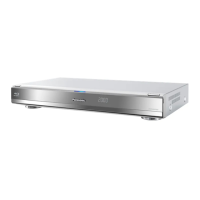
